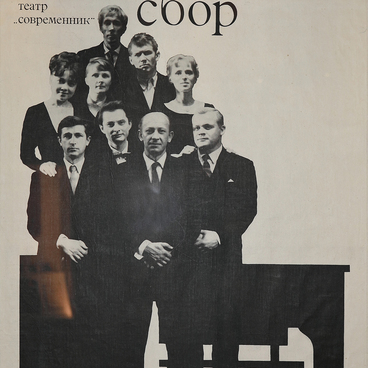The picture by Panteleimon Lepeshinsky presented in the exposition shows the 2nd Congress of the Russian Social Democratic Workers’ Party (RSDWP), which took place in 1903 leading to the Party’s split into the ‘Bolsheviks’ (from bolshoy - those in the majority) and the ‘Mensheviks’. (from small - those in the minority).
Pantheleimon Lepeshinsky was born in 1868 into the family of a village priest. He studied in the men’s gymnasium in Mogilev, and later graduated from the Physics and Mathematics Department of St. Petersburg University. Lepeshinsky organized underground revolutionary groups at the university and later joined the student chapter of the Narodnaya Volya (People’s Will) movement. He got arrested several times and was in exile from 1898 to 1900. Lepeshinsky joined the Bolsheviks in 1903 and emigrated to Switzerland the same year, not for long, however. Two years after the January 1905 Revolution, he returned to Petrograd and started working for the Bolshevik Party.
40 meetings were held at the 2nd RSDWP Congress. The Party first convened in Brussels and later in London. 26 organizations participated in the Congress, 43 delegates had the casting vote right and 14 - a deliberative vote right. The delegates represented the interests of the other Party members - there were already several thousand at the time.
There were twenty items on the Congress agenda, among them - the approval of the Party’s program, elections of the Central Committee and the Soviet (Council). The participants also discussed major problems, such as the nationalities and agrarian issues as well as the economic crisis.
The Party’s program was approved after long discussions. It consisted of two parts - the maximum and the minimum ones. The former envisaged formation of a socialist society by means of revolution and establishment of the dictatorship of the proletariat. The latter proposed to focus on attaining more specific objectives - overthrowing the monarchical system and establishing a democratic republic.
Most of the delegates, headed by Vladimir Lenin, supported the maximum one. The rest of the delegates were in favor of the minimum program. This is how the RSDWP split into the Bolsheviks and the Mensheviks.
Pantheleimon Lepeshinsky was born in 1868 into the family of a village priest. He studied in the men’s gymnasium in Mogilev, and later graduated from the Physics and Mathematics Department of St. Petersburg University. Lepeshinsky organized underground revolutionary groups at the university and later joined the student chapter of the Narodnaya Volya (People’s Will) movement. He got arrested several times and was in exile from 1898 to 1900. Lepeshinsky joined the Bolsheviks in 1903 and emigrated to Switzerland the same year, not for long, however. Two years after the January 1905 Revolution, he returned to Petrograd and started working for the Bolshevik Party.
40 meetings were held at the 2nd RSDWP Congress. The Party first convened in Brussels and later in London. 26 organizations participated in the Congress, 43 delegates had the casting vote right and 14 - a deliberative vote right. The delegates represented the interests of the other Party members - there were already several thousand at the time.
There were twenty items on the Congress agenda, among them - the approval of the Party’s program, elections of the Central Committee and the Soviet (Council). The participants also discussed major problems, such as the nationalities and agrarian issues as well as the economic crisis.
The Party’s program was approved after long discussions. It consisted of two parts - the maximum and the minimum ones. The former envisaged formation of a socialist society by means of revolution and establishment of the dictatorship of the proletariat. The latter proposed to focus on attaining more specific objectives - overthrowing the monarchical system and establishing a democratic republic.
Most of the delegates, headed by Vladimir Lenin, supported the maximum one. The rest of the delegates were in favor of the minimum program. This is how the RSDWP split into the Bolsheviks and the Mensheviks.

